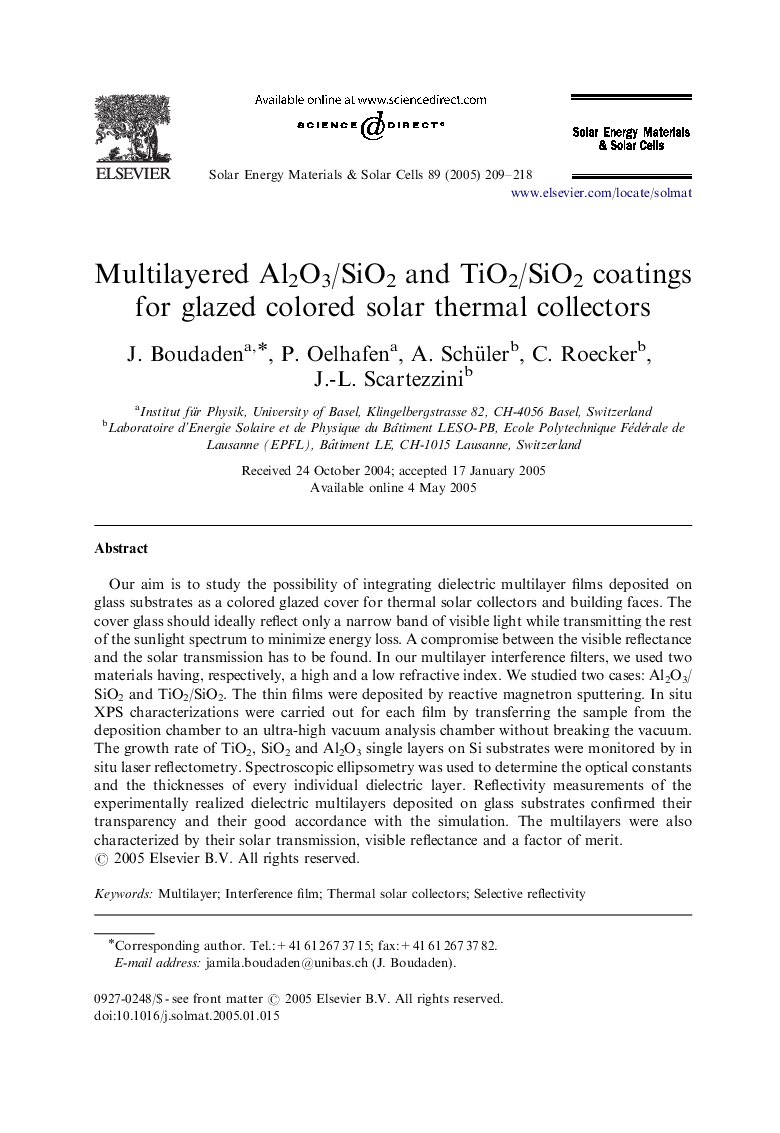| Article ID | Journal | Published Year | Pages | File Type |
|---|---|---|---|---|
| 9618637 | Solar Energy Materials and Solar Cells | 2005 | 10 Pages |
Abstract
Our aim is to study the possibility of integrating dielectric multilayer films deposited on glass substrates as a colored glazed cover for thermal solar collectors and building faces. The cover glass should ideally reflect only a narrow band of visible light while transmitting the rest of the sunlight spectrum to minimize energy loss. A compromise between the visible reflectance and the solar transmission has to be found. In our multilayer interference filters, we used two materials having, respectively, a high and a low refractive index. We studied two cases: Al2O3/SiO2 and TiO2/SiO2. The thin films were deposited by reactive magnetron sputtering. In situ XPS characterizations were carried out for each film by transferring the sample from the deposition chamber to an ultra-high vacuum analysis chamber without breaking the vacuum. The growth rate of TiO2, SiO2 and Al2O3 single layers on Si substrates were monitored by in situ laser reflectometry. Spectroscopic ellipsometry was used to determine the optical constants and the thicknesses of every individual dielectric layer. Reflectivity measurements of the experimentally realized dielectric multilayers deposited on glass substrates confirmed their transparency and their good accordance with the simulation. The multilayers were also characterized by their solar transmission, visible reflectance and a factor of merit.
Keywords
Related Topics
Physical Sciences and Engineering
Chemical Engineering
Catalysis
Authors
J. Boudaden, P. Oelhafen, A. Schüler, C. Roecker, J.-L. Scartezzini,
